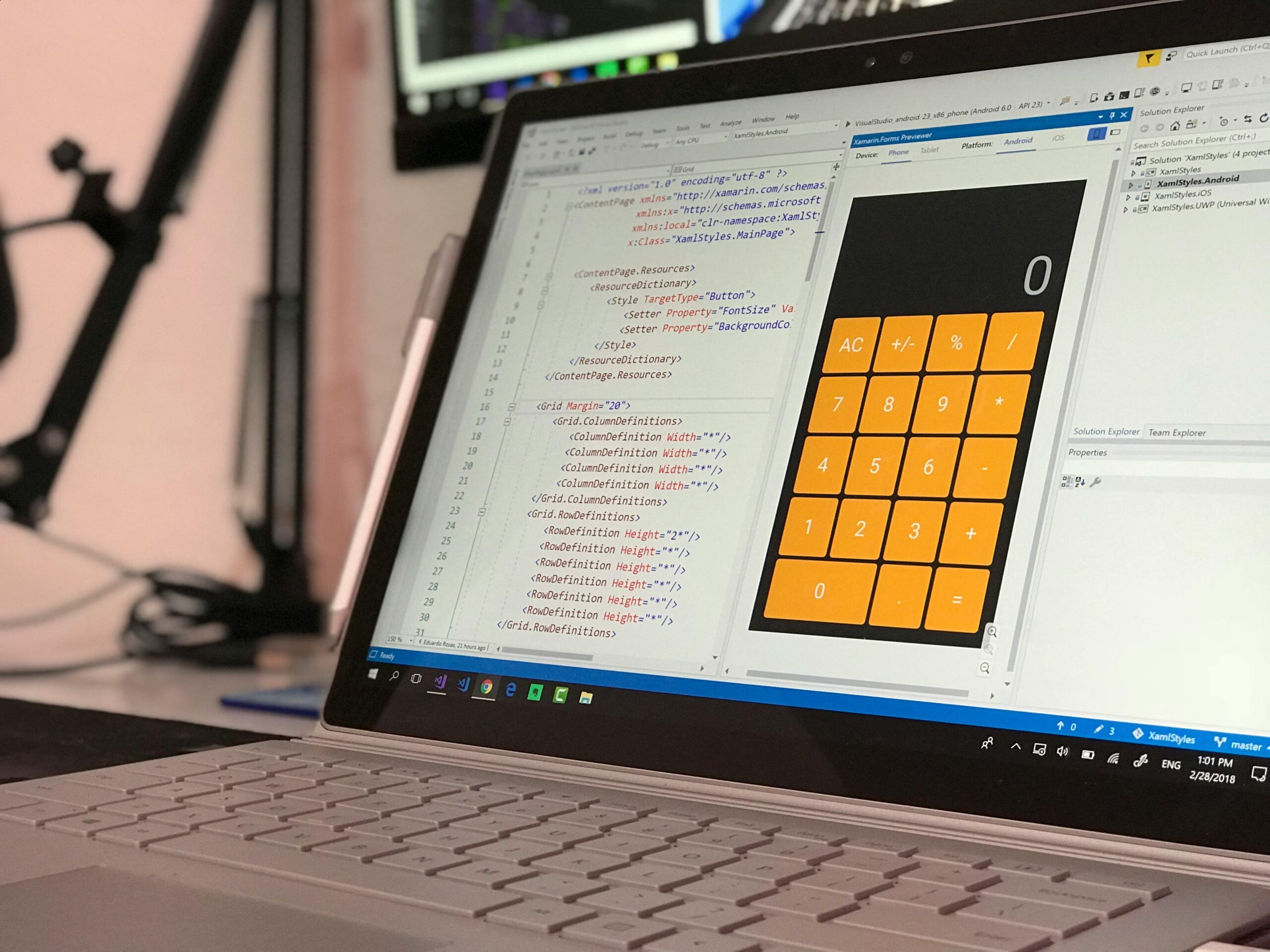
Imagine a universe that exists beyond our physical reality, but one you can access and interact with through technology. That’s the basic idea behind the metaverse. It’s a network of interconnected virtual worlds where people, represented by avatars, can socialize, play games, conduct business, and even own virtual property.
What is Metaverse?
The metaverse is a network of interconnected virtual worlds where people, as avatars, can socialize, play, work, and potentially own digital assets. It’s like a future version of the internet, but more immersive and three-dimensional.
Exploring the Diverse Landscape of the Metaverse:
The metaverse isn’t a singular entity, it’s a constellation of interconnected virtual experiences, each catering to different needs and interests. Let’s delve into some of the prominent types of metaverses:
1. The Gaming Metaverse:
This realm takes the cake for popularity. Imagine sprawling virtual worlds filled with millions of players, where you can build, explore, and battle alongside friends. Popular examples include Fortnite, Roblox, and Minecraft, which already offer glimpses into this social and interactive virtual playground.
2. The Social Metaverse:
Craving virtual hangouts with friends or family scattered across the globe? The social metaverse caters to that desire. Platforms like VRChat and Second Life allow users to create avatars, interact with others in virtual spaces, and participate in social events like virtual concerts or movie nights.
3. The Commerce Metaverse:
Get ready for a shopping revolution! The commerce metaverse allows you to ditch the physical stores and embrace virtual shopping sprees. Imagine trying on clothes in a virtual dressing room or browsing through digital showrooms filled with furniture or cars. Companies like Nike and Gucci are already experimenting with this concept, creating virtual stores and unique digital products for avatars.
4. The Educational Metaverse:
Learning goes interactive and immersive in the educational metaverse. Imagine stepping into a virtual replica of the Colosseum to learn about ancient Rome, or dissecting a virtual frog in a biology class. This realm has the potential to revolutionize education by making it more engaging and accessible for everyone.
5. The Workplace Metaverse:
The future of work might involve virtual meeting rooms and collaborative spaces. The workplace metaverse allows colleagues to connect and collaborate in real-time, regardless of their physical location. Imagine brainstorming ideas in a virtual whiteboard or attending team meetings in a 3D conference room.
6. The Fitness Metaverse:
Exercise gets a virtual upgrade in the fitness metaverse. Imagine attending group fitness classes led by virtual instructors or exploring scenic virtual landscapes while getting your daily workout. This realm holds the potential to make exercising more engaging and accessible, especially for those who prefer to work out at home.
These are just a few examples, and the possibilities within the metaverse are constantly evolving. As technology advances, we can expect even more diverse and exciting types of metaverses to emerge, shaping the way we work, learn, play, and connect in the future.
Exploring the History of the Metaverse:
The concept of the metaverse, while seemingly futuristic, boasts a surprisingly rich history. Buckle up as we embark on a journey through time to trace its fascinating origins:
1. The Seed is Sown (1992):
The term “metaverse” was first coined by science fiction author Neal Stephenson in his groundbreaking novel Snow Crash. This dystopian tale depicted a virtual reality world where humans interact through avatars, foreshadowing many aspects of the metaverse we envision today.
2. Early Exploration (1990s):
The 1990s witnessed the rise of early virtual worlds like “WorldsChat” and “Second Life.” These platforms, though limited compared to modern technology, allowed users to create avatars, interact with others, and even own virtual property, laying the groundwork for future developments.
3. The Mobile Revolution (2000s):
The rise of smartphones and mobile games like “Pokemon Go” further blurred the lines between the physical and digital worlds. These advancements in mobile technology helped people become more comfortable with augmented reality (AR) and virtual reality (VR) concepts, paving the way for a wider acceptance of the metaverse.
4. Social Media Takes the Stage (2010s):
Social media platforms like Facebook and Instagram began incorporating AR features, allowing users to virtually try on clothes or see how furniture would look in their homes. This further familiarized the public with the potential of immersive experiences within a familiar online environment.
5. The Dawn of a New Era (2020s):
With advancements in VR and AR technology, coupled with the growing interest in blockchain and Web3, the concept of the metaverse has exploded in popularity. Companies are investing heavily in developing metaverse platforms, and discussions about its potential impact on various aspects of our lives are ongoing.
Who else is using the metaverse?
While the term “metaverse” is still evolving and there’s no single, universally accepted definition, several companies and organizations are actively building and experimenting within this virtual space:
Tech Giants:
- Meta (formerly Facebook): Their vision for the metaverse revolves around interconnected virtual spaces for work, entertainment, and social interaction. They’ve invested heavily in VR technology and are developing platforms like Horizon Worlds.
- Microsoft: Mesh is their take on the metaverse, focusing on collaborative work experiences in a virtual environment. Imagine attending meetings or brainstorming sessions with colleagues as avatars in a shared space.
- Apple: Though details are scarce, Apple is rumored to be developing VR/AR hardware and software, potentially paving the way for their own metaverse experience.
Gaming Companies:
- Epic Games (Fortnite): Fortnite already offers a glimpse into the metaverse with its social experiences, virtual concerts, and creative mode where players can build their own worlds.
- Roblox: This popular platform allows millions of users to create and play games together, fostering a sense of community and shared experiences, key aspects of the metaverse vision.
Fashion and Retail Brands:
- Nike: They’ve launched Nike land within Roblox, a virtual world where users can test and purchase virtual sneakers for their avatars.
- Gucci: They’ve created virtual replicas of their stores and collaborated with Roblox on limited-edition digital clothing items, showcasing the potential of the metaverse for fashion and commerce.
These are just a few examples, and the list is constantly growing. Educational institutions, healthcare providers, and even fitness companies are exploring the potential of the metaverse in their respective fields.
Comparing AR, VR, and the Metaverse:
| Feature | Augmented Reality (AR) | Virtual Reality (VR) | Metaverse |
|---|---|---|---|
| Environment | Overlays digital elements onto the real world | Creates a completely immersive, simulated environment | Combines elements of AR and VR to create a network of interconnected virtual worlds |
| Technology | Typically accessed through smartphones, tablets, or smart glasses | Requires specialized headsets and controllers | Varies, potentially using a combination of AR, VR, and other technologies |
| Interaction | Users interact with both the real and digital world simultaneously | Users interact primarily with the virtual environment, with limited interaction with the real world | Users can interact with the virtual world and potentially with each other through avatars |
| Purpose | Enhance the real world with additional information or functionality | Provide immersive experiences for entertainment, education, and training | Create a persistent, shared virtual space for various purposes, including work, social interaction, and entertainment |
| Examples | Pokemon Go, furniture placement apps, AR filters on social media | VR games, educational VR experiences, virtual tours | Metaverse platforms like Fortnite Creative Mode, Horizon Worlds, Roblox |
| Current Status | Relatively mature technology with wide adoption | Evolving technology with growing adoption | Early stage of development, with the potential to become a major platform in the future |
The metaverse can be seen as an evolution of AR and VR, incorporating elements of both technologies to create a richer and more interactive experience.
AR and VR are specific technologies, while the metaverse is a broader concept that encompasses various technologies and experiences.
The boundaries between these concepts can be blurry, and some experiences might combine aspects of all three.
Exploring the Potential Future of the Metaverse:
Here’s a glimpse into what the future might hold:
1. Enhanced Social Interaction:
Imagine virtual hangouts with friends or family scattered globally, attending virtual concerts with thousands of others, or even exploring virtual museums together. The metaverse could revolutionize social interaction, fostering deeper connections and overcoming geographical barriers.
2. Redefining Work:
Remote work might take on a whole new meaning. Imagine attending meetings in virtual conference rooms, collaborating with colleagues on projects in shared 3D workspaces, or even attending virtual training sessions in simulated environments. The metaverse has the potential to transform the way we work, making it more collaborative and efficient.
3. Immersive Learning:
Learning goes beyond textbooks and lectures. The metaverse could provide interactive and engaging educational experiences. Imagine exploring historical events in virtual recreations, dissecting virtual models in biology classes, or even taking virtual field trips to different parts of the world. This could revolutionize education by making it more engaging and accessible for everyone.
4. Evolving Entertainment:
Entertainment takes center stage in the metaverse. Imagine attending live concerts or sporting events from the comfort of your home, exploring virtual theme parks with friends, or even creating and sharing your own interactive experiences. The possibilities for entertainment are vast and could cater to diverse preferences.
5. The Rise of the Virtual Economy:
As people spend more time in the metaverse, a virtual economy is likely to emerge. Imagine buying and selling virtual goods for your avatar, owning virtual land, or even participating in a virtual job market. This could create new economic opportunities and redefine how we interact with value and ownership in the digital space.
Challenges and Considerations:
While the possibilities are exciting, it’s crucial to acknowledge potential challenges:
- Privacy and security concerns: Protecting personal information and ensuring user safety in the metaverse will be paramount.
- Digital divide: Ensuring equitable access to the technology and infrastructure required for the metaverse is crucial to avoid creating further divides.
- Addiction and mental health considerations: Striking a healthy balance between the physical and virtual world is essential.
- Ethical considerations: Issues like digital ownership, data rights, and potential societal impacts need careful consideration and regulation.
Conclusion:
The metaverse, a network of interconnected virtual worlds, is still evolving but holds immense potential to reshape our future. It could revolutionize social interaction, work, learning, and entertainment, creating a virtual space for collaboration, exploration, and new forms of expression. However, addressing challenges like privacy, security, and the digital divide will be crucial to ensure the metaverse is a positive force for all.
References:
- “The Metaverse and the Future of Humanity” by The Pew Research Center: https://www.pewresearch.org/internet/2022/06/30/the-metaverse-in-2040/
- “Metaverse: What Is It?” by Search Engine Journal: https://www.sciencedirect.com/science/article/pii/S2405959523001649
- “Metaverse – Wikipedia: https://en.wikipedia.org/wiki/Metaverse
- “The History of the Metaverse: From Sci-Fi to Reality” by Time Magazine: https://time.com/6197849/metaverse-future-matthew-ball/
- “What is the Metaverse, and Why Should You Care?” by The New York Times: https://www.nytimes.com/2022/10/07/technology/metaverse-facebook-horizon-worlds.html
FAQs
1. What is the concept of the metaverse?
The metaverse is a hypothetical iteration of the internet envisioned as a single, shared, immersive, and persistent 3D virtual space. Users, represented by avatars, can interact with each other and the virtual world in real-time. Think of it as a vast network of interconnected virtual worlds, accessible through specialized technology like VR headsets or augmented reality tools.
2. What is the metaverse known for?
While still under development, the metaverse is known for its potential to revolutionize various aspects of our lives. Some key aspects it’s known for include:
Social interaction: Imagine attending virtual concerts with friends, exploring virtual museums together, or even hanging out in shared virtual spaces, regardless of your physical location.
Enhanced work experiences: The metaverse could allow for collaborative work in virtual spaces, attending meetings as avatars, and even participating in training simulations.
Immersive learning: Imagine exploring historical events through virtual recreations, dissecting virtual models in biology classes, or taking virtual field trips across the globe.
Evolving entertainment: The metaverse could offer unique forms of entertainment, such as attending live events from the comfort of your home, exploring virtual theme parks, or creating and sharing interactive experiences.
3. What does the metaverse refer to?
The term “metaverse” refers to the broader concept of a network of interconnected virtual worlds. It’s not a single platform or product, but rather an evolving idea encompassing various technologies and experiences.
4. What is a metaverse journal article?
A metaverse journal article is a research paper or academic publication that focuses on the metaverse concept, exploring its potential applications, technical aspects, societal implications, or ethical considerations. These articles can be found in various academic journals specializing in technology, communication, or social sciences.







